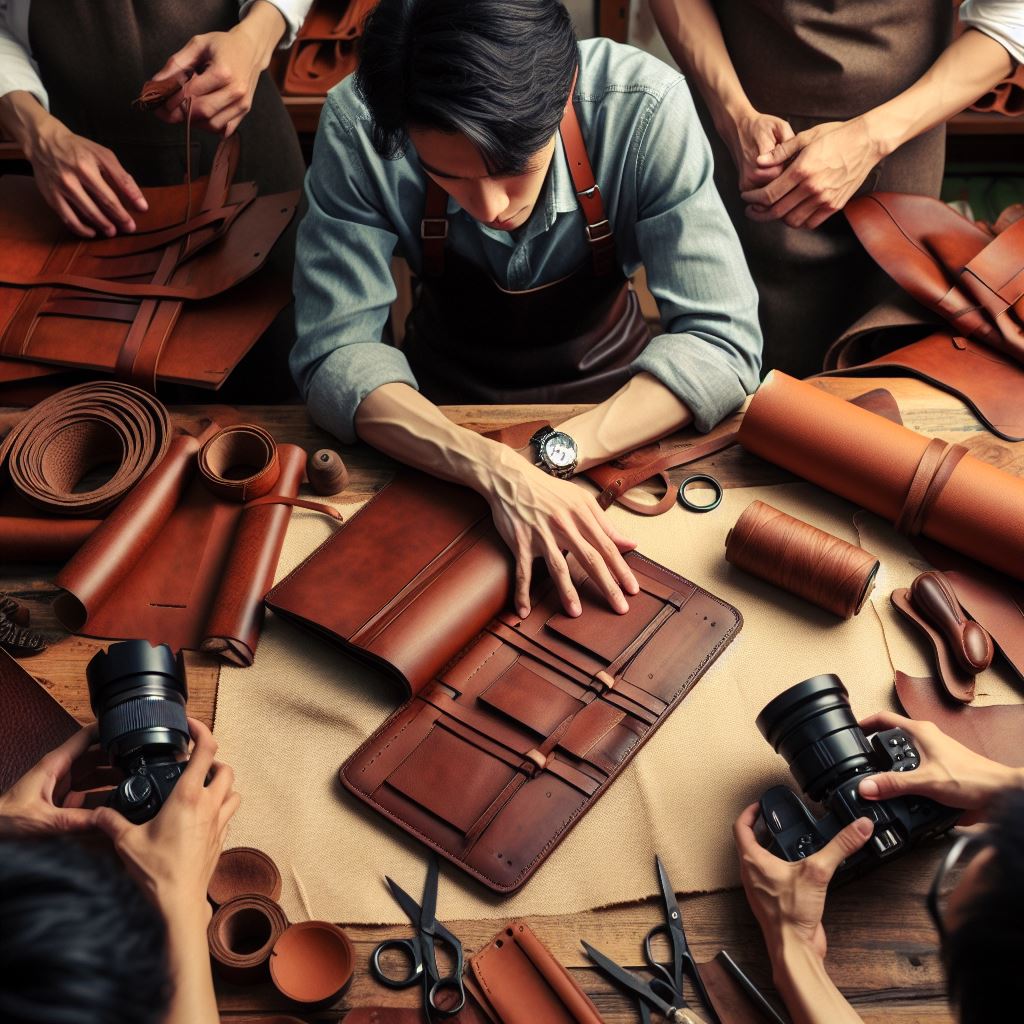How Leather Ages and Gains a Beautiful Patina
Posted by The Green Tanners on 9th Sep 2025
Introduction
Is not true that old is gold? The same is true with leather. It begins to acquire more characteristics the older it grows. Additionally, the new leather is fantastic. It goes well with leather jackets and is quite comfy. On the other hand, aged leather gains some distinct benefits with time.
With time, it takes on a deeper hue and sheen. We refer to this finish as "Patina." Thus, patina simply refers to the exquisite sheen that leather acquires over time. Natural body oils, time, sunlight, and dust, are the key factors that contribute to the development of leather patina.
Leather ages in the same way as the wine taste improves with age. If you need answers to the questions like “ How does leather age?” or “What colour is considered patina?“ Then keep reading for satisfactory answers.
What is Patina Leather?
Before trying to understand the crux, patina is not a term that indicates that situation used to define leather condition yet it defines the effect of time on a particular object. This does not only apply to leather goods but also to materials like brass, copper, raw wood, and certain stones. They all can develop a patina over time.
A famous example is the Statue of Liberty. When it was unveiled in 1886, it had a reddish-brown colour typical of copper. Over the next 20 years, the copper reacted with air and water, turning it green through a process called oxidation. This green patina protects the copper underneath. For high-quality leather, forming a patina is a normal part of ageing. It means the leather gradually changes in colour and texture and becomes softer. What makes leather patina special is that it's unique and shaped by its specific environment.

What Makes Leather Develop Patina?
Leather patina develops naturally over time due to exposure to different elements. Here are some key factors that are reasons for the development of leather patina:
Usage
Regular use of leather items like bags, shoes, or jackets helps patina form. As you use these items, the leather becomes softer and smoother, and the colours deepen and become more interesting.
Moisture
Moisture can darken leather and change its colour. However, too much moisture can make the leather brittle and prone to cracking.
Oils
Oils from your skin and the environment can get absorbed into the leather, adding to its patina and giving it a unique, worn-in look.
Natural Light
Exposure to natural light can change its colour. However, too much direct sunlight can make the leather fade or become discoloured.
Chemical Treatments
The tanning process and chemicals used on leather affect how quickly patina forms. For instance, vegetable-tanned leather develops a patina faster than chrome-tanned leather.
Heat
Heat speeds up the ageing process of the leather, making it dry out and develop patina faster.

How do I prevent my leather Goods from patina?
Patina is a natural darkening process that happens to cowhide leather as it gets older. Many people see this patina as a positive feature because it shows the leather is high-quality and natural, making the item look authentic. It indicates that the item has been used and loved, giving it a rich, lived-in look over time.
However, if you want to slow down this process, there are steps you can take:
The first step is to handle the leather bag carefully every day. Make sure your hands are clean and free of oils, creams, or dirt before touching the bag. This prevents substances from your hands from transferring to the leather, which helps to keep the bag looking vibrant and fresh for longer.
Store Properly
Next, pay attention to how you store your bag. Keep it out of direct sunlight for long periods, as this can speed up the patina process. When you store the bag, use a dust bag or a soft cotton pillowcase to protect it from dust and dirt, which can scratch the leather and affect its appearance. Also, make sure to air the bag regularly to prevent mould and mildew, which can change the look of the leather. Using bag inserts can help keep the bag's shape and avoid unnecessary stretching and creasing.
Avoid Water For Cleaning
For cleaning, gently and regularly wipe the leather with a soft, dry cloth to remove dust and dirt. Avoid water and high humidity as much as possible, as they can make the leather age faster. If your bag gets wet, dry it gently with a soft cloth as soon as you can to prevent water spots and damage. For serious stains or maintenance, consider seeking help from a professional to restore your bag and slow the patina process.
By handling your bag carefully, storing it properly, and cleaning it gently, you can slow down the patina process and enjoy your leather accessories for many years. Remember, a certain amount of patina is inevitable over time, and many people appreciate the unique character it gives to the leather.

Final Thought
you have now taken a close look at how leather patina works. With this new knowledge, you are ready to explore the amazing world of ageing leather goods. Discover how leather ages and develops a unique patina over time. Learn about the process, factors influencing patina, and tips for caring for your leather items.


